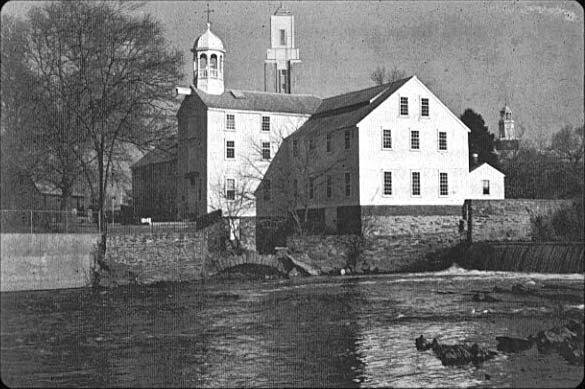
Land Prices- Land value was dramatically higher in antebellum society for counties that had river, railroad, or canal access…huge economic gains from transportation ease.
Important
Economic reformers:
Andrew Smith Halide- he was a mechanical genius who came up with the idea
of cable car transportation. This was another achievement in transportation,
and was another way to transport things and people across cities and towns.
Eli Whitney was also a imprtant reformer who built the cotton gin, which
is seen above. Also, Samuel SSlater was an important man who brought the
textile mills from England. More information on these men can be found
on the biography
page.
Economic Changes in
Industry:
Ø The“putting-out system” were beginnings of mass production.
Ø Artisans very important—took on journeymen, apprentices,
and indentured
Ø Rhode Island System—family employment and small mills...difficulties
with the larger factories led to the...
Ø Waltham System: young farm daughters hired. Worked long hours/low
pay.
Ø Eli Whitney’s cotton gin---allowed more progress in the
South.
Ø INTERCHANGEABLE PARTS used in assembly line system.
“Boston Associates” brought canals right to their factory
to increase productivity.
Canals and Steamboats:
John Fitch and Robert Fulton---helped develop early steamboats.
Erie Canal—Construction began in 1817, finished canal spanned 364
miles. Allowed goods to be shipped from upper Midwest to the East Coast
quicker and cheaper. Erie Canal also helped initiate the building of other
canals-even in the South.
Railroads:
By far the quickest and best way to ship goods and people. More of them
than canals—far more dependable.  Baltimore-Ohio,
Boston and Worcester, and Charleston and Hamburg railroads were the 3
first...beginning to make the North far more navigable than the South
(would later effect Civil War).
Baltimore-Ohio,
Boston and Worcester, and Charleston and Hamburg railroads were the 3
first...beginning to make the North far more navigable than the South
(would later effect Civil War).
Governmental
Influence:
First National Road was not followed up with more—70 percent of
canals were also state funded. 50 percent of railroads were state funded
in the first half of the 19th century also. With the issue of monopolies,
it was clear that the federal gov. wanted to open up competition, as shown
in the court cases of Gibbons v. Ogden and Charles River Bridge v. Warren
Bridge.
Want to learn more on economic reforms in the pre-civil war era? Try the University of Virginina or The Journal of Real Estate Finance and Economics